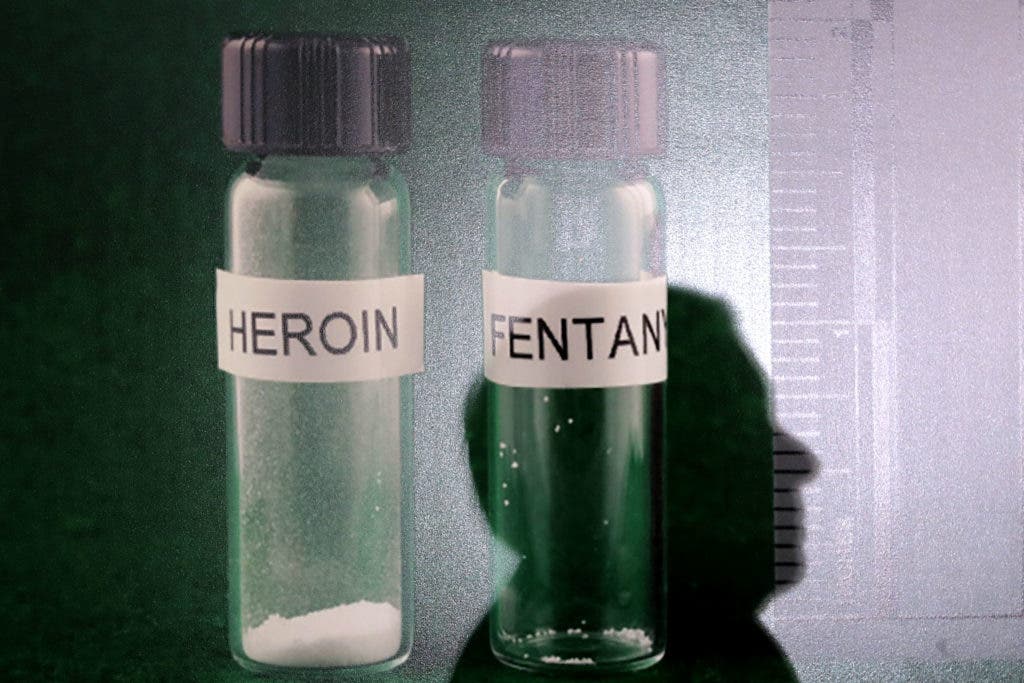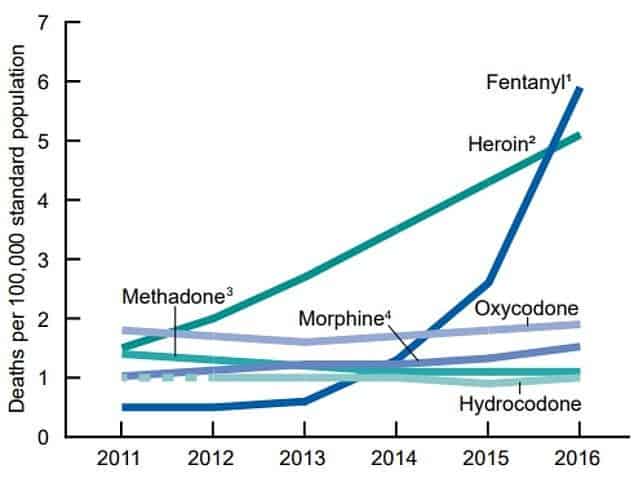An opioid that’s several times stronger than heroin is now officially the deadliest drug in the United States, say researchers at the Centers for Disease Control and Prevention (CDC). The same report shows that drug overdoses climbed again last year, contributing to a growing drug epidemic in the country that shows no sign of slowing down in the near future.
Fentanyl is a very powerful synthetic opioid that’s 50 to 100 times more concentrated than morphine. For a user with little tolerance to the drug, even less than a milligram of fentanyl can trigger an overdose. Imagine a few grains of sand — that’s enough to kill you if it’s fentanyl. This makes it incredibly easy for people to overestimate their dosage, getting themselves killed in the process. In most cases, however, people are not aware that they are taking fentanyl as the drug is often cut into other substances to make them stronger.
“It’s very difficult for people to know just how much they are extracting from the patch and injecting. It is already a very powerful opioid and people are injecting it without being able to control how much,” said NDARC’s Director Michael Farrell.
“Like all opioids including heroin, fentanyl is a respiratory depressant – it interferes with the user’s ability to breathe. Because it is so concentrated people can misjudge the dose for themselves to dangerous degree.”
In 2015, more than 52,000 people died of drug overdoses. In 2016, the total rose to more than 63,000 — a jump that was largely driven by fentanyl. According to the latest CDC report on drug use, fentanyl was involved in nearly 29% of those cases, while heroin came in second with 25% and methamphetamine was third at a rate of over 10%. What’s staggering is that in 2011, fentanyl was responsible for only 4% of overdoses. Between 2013 and 2016, overdoses from fentanyl rose 113% a year.
The drug has been around for decades in the form of medicine meant to relieve pain. The main reason why it’s become so popular can be traced down to the rise in opioid painkillers that have been sweeping the nation. As people looked for stronger, cheaper alternatives, fentanyl naturally became popular. This is a drug that’s relatively easy to produce, which provides a cheaper high per dose than heroin.
And as if fentanyl wasn’t scary enough, an analog called carfentanil is also creeping up in the illicit drug market. Carfentanil is normally used as a sedative for large animals such as elephants and can be very dangerous if it enters the body of humans. It’s so dangerous that some countries, the U.S. included, have described it as a ‘chemical weapon’ and have prepared contingency plans in the face of its potential use in war.
Law enforcement officials believe that most of this fentanyl comes from labs in China, from where it is shipped to South America before making its way to US markets. One of the things that make these drugs so deadly is the fact that very often drug users don’t seek them out, instead buying heroin that turns out to be laced with potent fentanyl or one of its analogs. A user might take a hit of their usual dose, only to end up overdosing because of the added fentanyl. Of course, many times users deliberately take these drugs. Prince, for example, overdosed on fentanyl he was taking as medication.
There’s no clear-cut solution to the rise of fentanyl or synthetic opioids in general. Even cracking down on the supply is not a particularly good solution. If opioid painkiller would magically disappear overnight, people would turn to heroin. If there was no heroin, they’d go for fentanyl, and then to carfentanil, and then to the hundreds of other analogs. Perhaps a solution to the crisis involves tackling demand, not supply, through extensive drug prevention and treatment measures.











